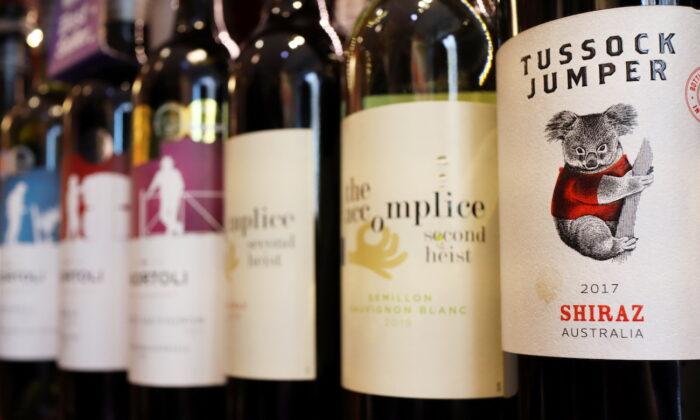Despite experiencing a turbulent year in the global wine market, Australian exporters are making significant gains across Asia after being denied the China market by Beijing.
In its latest figures, Wine Australia revealed that overall volumes were down 17 percent to 619 million litres resulting in a 30 percent decline in the value of exports to AU$2.03 billion (US$1.45 billion).
The industry group said the “unprecedently tough market conditions” over the past 12 months ending December 2021, was caused by issues such as supply chain bottlenecks and a “counter-swing” in some markets after customers stockpiled wine during the 2020 COVID-19 outbreak.
However, Wine Australia blamed the Chinese Communist Party’s (CCP) ongoing tariff war against Australia for causing the biggest dent in the fortunes of exporters.

Current figures reveal that the volume of exports to China declined 93 percent to 6.4 million litres, equating to a 97 percent drop in the value of exports to AU$29 million—a loss of nearly $1 billion in value and 90 million litres.
At the same time, significant increases in export value were recorded in countries around mainland China including Singapore (up 108 percent to AU$166 million), Hong Kong (up 45 percent to $191 million), South Korea (up 74 percent to $47 million), Taiwan (up 65 percent to $31 million), and Thailand (up 31 percent to $28 million).
“The pandemic is still disrupting the on-trade, the global freight crisis is continuing to cause shipping delays and increased freight costs, and while there was export growth to many destinations, it will take time to offset the loss in trade to mainland China,” she said.

“This is not something that will happen overnight, nor within a year. But the Australian wine sector is resilient, and there are early signs that hard work in expanding and diversifying markets is paying off.”
Since April 2020, Australia has weathered an ongoing trade coercion campaign from the CCP after Foreign Minister Marise Payne called for an investigation into the origins of COVID-19. The move drew a sharp rebuke from Chinese Ambassador to Canberra Cheng Jingye, who warned of potential action against Australia’s trading relationship with China.
In the following months, the CCP implemented a series of bans, suspensions, and regulatory hurdles on coal, wine, beef, barley, lobster, timber, lamb, and cotton exports to the country.
Treasurer Josh Frydenberg revealed in September however that despite Australian exports dropping $5.4 billion over the year to the June 2021 quarter.
In May 2021, Chinese police found over 569 kg of lobster during a raid, with an estimated street value of US$19,300. The shellfish were found along with typical goods preferred by smugglers including handbags, jewellery, shark fin, and smartphones.





